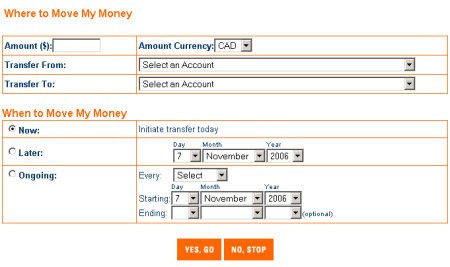How safe are your savings A CDIC primer Yahoo Finance Canada
Post on: 22 Апрель, 2015 No Comment

Focus: RRSP
Weve seen some incredible what ifs over the past few years — a spectacular global financial meltdown, the failure of giant investment banks like Lehman Brothers and government bailouts of manufacturing icons General Motors and Chrysler.
Even now, with households across Canada reeling from the aftermath, a new wave of destruction could be heading our way. On the other side of the Atlantic Ocean entire countries teeter on the verge of financial collapse, as leaders try desperately to keep it from spreading.
Canada has been fortunate to avoid the worst of it thanks to a strand of prudence that runs through our national DNA — but financial institutions have failed here in the past, and could fail in the future.
What is the CDIC?
Thats why the Canada Deposit Insurance Corporation exists. The CDIC is a crown corporation backed by the federal government that protects deposits made with banks and member financial institutions.
If those financial institutions fail, up to $100,000 of your savings and some investments will be insured. Coverage for Canadians is automatic and the member institution picks up the premium. Types of accounts include:
- savings and chequing
- money orders
- certified cheques
- travellers cheques
- bank drafts
- accounts that hold realty taxes on mortgaged properties.
Guaranteed Investment Certificates (GICs) or other term deposits are also covered provided the original term to maturity is five years or less.
What isnt covered?
Throughout its nearly 50 year existence the CDIC has helped foster the sense of financial security many Canadians take for granted — but there are limits on what is covered that you may not know about.
For starters accounts are only insured if they are held with member institutions. The Canadian Deposit Insurance Corporation includes a membership list on its website. Most familiar Canadian financial institutions are members but some are not so its important to make sure yours is included.
Credit Unions, caisses populaires, Canadian subsidiaries of foreign banks and some Canadian chartered banks are not members. In some cases, however, credit unions and caisses populaires are covered by provincial deposit insurance programs.
Banks that are not CDIC members are required by law to inform customers that their savings are not insured.
Also, savings must be in a Canadian dollar account. The strength of the Canadian dollar over the past decade and less restrictive foreign content rules on registered retirement savings plans have prompted many Canadian investors to establish U.S. dollar accounts to hedge against fluctuations. While diversifying currency risk is good its important to know that U.S. dollar accounts are not covered if the financial institution fails.
Probably the biggest misunderstanding concerning deposit insurance relates to accounts or financial products that cross the line from savings to what are typically considered investments.
To illustrate how fine that line is, GICs and other term deposits with a date to maturity of more than five years are not insured.
Mutual funds and stocks are also not covered. Its important to understand that unlike savings, investments carry an inherent risk of falling in value.
For that same reason bonds and even Treasury bills are not covered because bondholders assume a risk of devaluation or even default.
Some accounts fall into a grey area depending on what they hold.
Eligible accounts and financial products that are held in a registered retirement savings plan (RRSP) or a registered retirement income fund (RRIF) are covered but stocks, bonds and mutual funds held in those same accounts are not.
The same rule applies for Tax Free Savings Accounts. Stocks, bonds and mutual funds are not covered in a TFSA while cash and securities such as money orders and short-term GICs are insured.
Even debentures — a type of debt issue that is backed by creditworthiness rather than collateral — dont qualify for coverage if they are issued by governments or corporations other than a loan company that is a CIDC member.
To help avoid the what ifs savers can play it extra safe and sleep a little sounder at night by ensuring no single account exceeds $100,000 in insurable savings. The CDIC will cover each account up to that amount even if more than one is held with the same financial institution. Often its as simple as instructing to bank to open up a new type of account.
The CDIC website provides detailed information on what is and isnt covered and even provides a toll free number so you can ask your what-if question.














